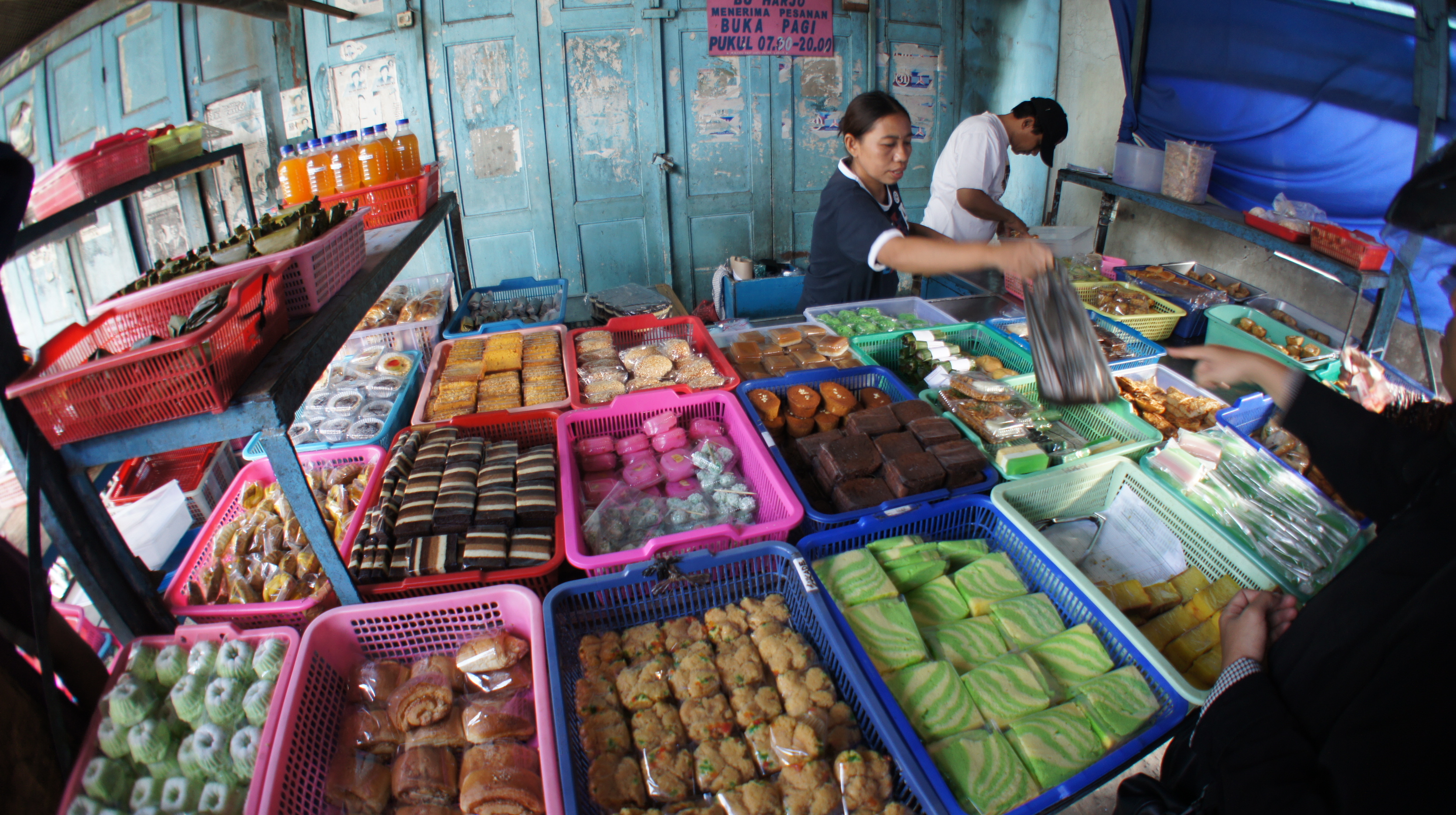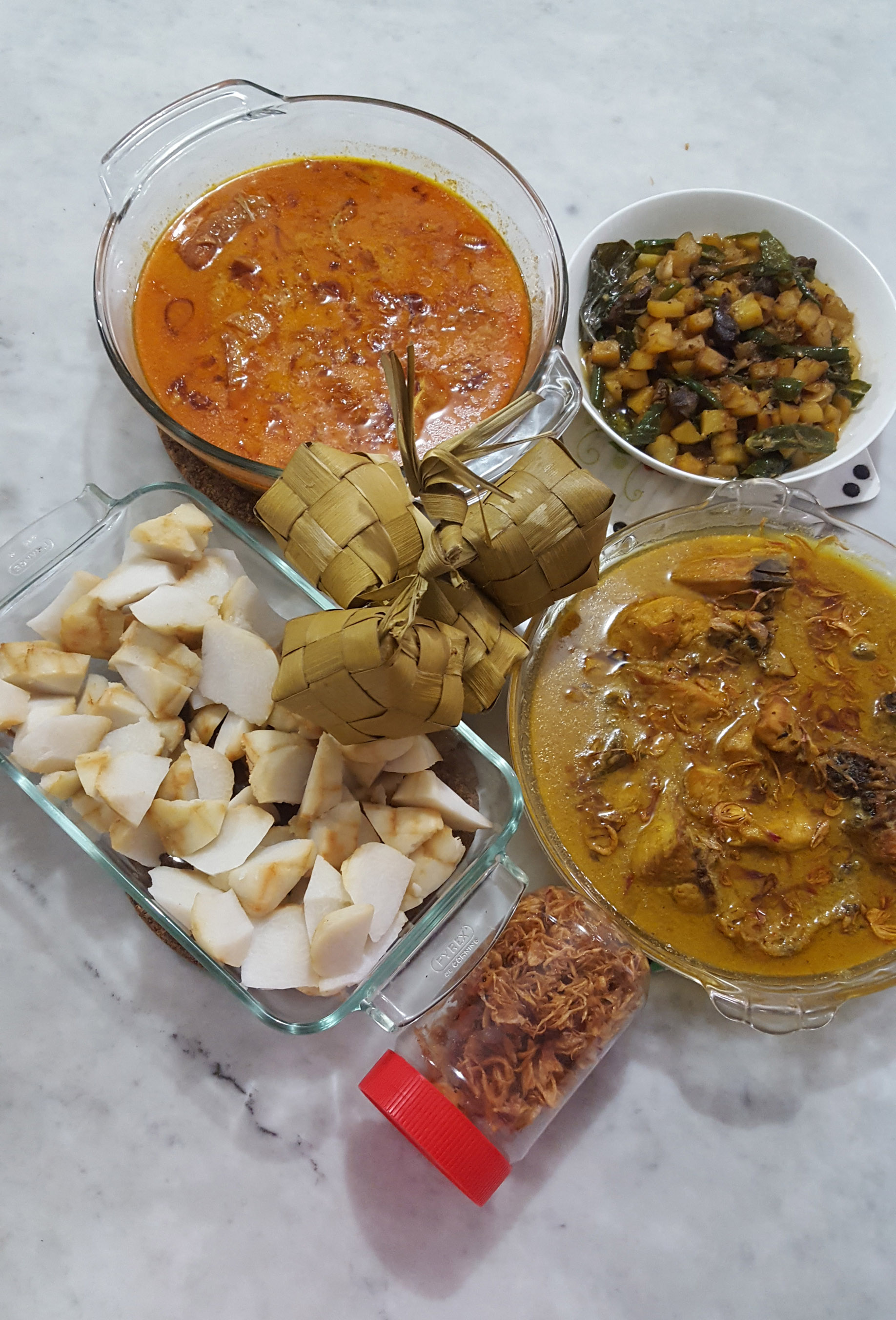|
Lumpia Semarang
Lumpia Semarang or in old spelling known as loenpia semarang ( Javanese: ''lunpiyah'', Hanacaraka: ꦭꦸꦤ꧀ꦥꦶꦪꦃ, Pegon: لونبيياه) is an Indonesian appetizer or snack dish ''rollade''-like consisting of '' rebung'', egg, dried shrimp with chicken meat and/or prawn in a crepe-like pastry skin called "lumpia wrapper". Lumpia Semarang is a typical Lumpia the city of Semarang, the origin of this spring roll is from Semarang, Central Java. Semarang lumpia is served either deep-fried or unfried, as the filling is already cooked. See also * Cuisine of Indonesia * List of Indonesian snacks * Lumpia * Sumpia * Spring roll * Seblak Seblak ( Sundanese: ᮞᮨᮘᮣᮊ᮪) is a Sundanese savoury and spicy dish, originating from West Java, Indonesia. Made of wet ''krupuk'' (traditional Indonesian crackers) cooked with protein sources (egg, chicken, seafood or beef) in spicy ... References {{Indonesian cuisine Appetizers Indonesian cuisine Kue Javanese c ... [...More Info...] [...Related Items...] OR: [Wikipedia] [Google] [Baidu] |
Indonesia
Indonesia, officially the Republic of Indonesia, is a country in Southeast Asia and Oceania between the Indian and Pacific oceans. It consists of over 17,000 islands, including Sumatra, Java, Sulawesi, and parts of Borneo and New Guinea. Indonesia is the world's largest archipelagic state and the 14th-largest country by area, at . With over 275 million people, Indonesia is the world's fourth-most populous country and the most populous Muslim-majority country. Java, the world's most populous island, is home to more than half of the country's population. Indonesia is a presidential republic with an elected legislature. It has 38 provinces, of which nine have special status. The country's capital, Jakarta, is the world's second-most populous urban area. Indonesia shares land borders with Papua New Guinea, East Timor, and the eastern part of Malaysia, as well as maritime borders with Singapore, Vietnam, Thailand, the Philippines, Australia, Palau, and India ... [...More Info...] [...Related Items...] OR: [Wikipedia] [Google] [Baidu] |
Appetizer
An hors d'oeuvre ( ; french: hors-d'œuvre ), appetiser or starter is a small dish served before a meal in European cuisine. Some hors d'oeuvres are served cold, others hot. Hors d'oeuvres may be served at the dinner table as a part of the meal, or they may be served before seating, such as at a reception or cocktail party. Formerly, hors d'oeuvres were also served between courses.''Oxford English Dictionary'', First Edition, 189''s.v.''/ref> There are two types of hors d'oeuvre from service point of view: # General hors d'oeuvre # Classical hors d'oeuvre General hors d'oeuvres include cold preparations such as salad, cold meat, and fish. Classical hors d'oeuvres include fruit juice and soft drinks, grapefruit, shellfish cocktail, and so on. Typically smaller than a main dish, an hors d'oeuvre is often designed to be eaten by hand. Etymology in French literally means "outside the work"; that is, "not part of the ordinary set of courses in a meal". In practice, i ... [...More Info...] [...Related Items...] OR: [Wikipedia] [Google] [Baidu] |
Seblak
Seblak ( Sundanese: ᮞᮨᮘᮣᮊ᮪) is a Sundanese savoury and spicy dish, originating from West Java, Indonesia. Made of wet ''krupuk'' (traditional Indonesian crackers) cooked with protein sources (egg, chicken, seafood or beef) in spicy sauce. ''Seblak'' is a specialty of Bandung city, West Java, Indonesia. ''Seblak'' is common at restaurants, '' warungs'', and ''gerobak'' (cart) street vendors. It is one of the most popular street foods in Indonesia, especially in Bandung and Jakarta. Etymology The word ''seblak'' may have originated Sundanese that is ''Nyeblak'' or surprising, because it tastes spicy and rich in spices. Seblak also refers to ingredients of Sundanese cuisine, made from ''cikur'' or Galangal (''Kaempferia galanga''). Ingredients At first glance, the ingredients and cooking method of ''seblak'' is quite similar to other common Indonesian food, such as '' mie goreng'' and ''kwetiau goreng'', however ''seblak'' differ with the chewy gelatin-like texture ... [...More Info...] [...Related Items...] OR: [Wikipedia] [Google] [Baidu] |
Sumpia
Sumpia ( jv, ꦱꦸꦤ꧀ꦥꦶꦪꦃ, sunpiyah) is Indonesian traditional lumpia spring roll with much drier and smaller shape. Its diameter is about the same as human finger. Just like another Indonesian lumpia, sumpia consists of beef or prawn floss as filling in a lumpia wrapper, spiced with coriander, lemon leaf, garlic and shallot. In Indonesia, the most common filling for sumpia is ''ebi'' or dried shrimp floss. See also *Cuisine of Indonesia *List of Indonesian snacks *Lumpia * Lumpia semarang *Spring roll *Samosa A samosa () or singara is a fried Indian pastry with a savory filling, including ingredients such as spiced potatoes, onions, and peas. It may take different forms, including triangular, cone, or half-moon shapes, depending on the region. Samo ... References Appetizers Indonesian cuisine Javanese cuisine Kue {{Indonesia-cuisine-stub ... [...More Info...] [...Related Items...] OR: [Wikipedia] [Google] [Baidu] |
Lumpia
''Lumpia'' are various types of spring rolls commonly found in the Philippines and Indonesia. Lumpia are made of thin paper-like or crepe-like pastry skin called "lumpia wrapper" enveloping savory or sweet fillings. It is often served as an appetizer or snack, and might be served deep fried or fresh (unfried). Lumpia are Filipino and Indonesian adaptations of the Fujianese and Teochew ''popiah'', which was created during the 17th century in the former Spanish colonial era. In the Philippines, lumpia is one of the most common dishes served in gatherings and celebrations. In Indonesia lumpia has become a favorite snack, and is known as a street hawker food in the country. In the Netherlands and Belgium, it is spelled ''loempia'', the old Indonesian spelling, which has also become the generic name for "spring roll" in Dutch. A variant is the Vietnamese lumpia, wrapped in a thinner pastry, though still close in size to a spring roll, in which the wrapping closes the ends off c ... [...More Info...] [...Related Items...] OR: [Wikipedia] [Google] [Baidu] |
List Of Indonesian Snacks
This is list of Indonesian snacks. In Indonesian, snacks are called ''kudapan'', ''makanan kecil'' (lit. "small food") or ''makanan ringan'' (lit. "light food"). They might taste savoury or sweet, snack foods are a significant aspect of Indonesian cuisine which is very diverse. Traditional kue snacks — a collection of steamed or fried snacks with rice-flour and coconut sugar-based ingredients, exist in many forms. While traditional crackers of krupuk and kripik chips were also a popular crispy choice. Crackers, chips and crisps Fritters Dumplings Savoury snacks Tofu-based snacks ''Kue basah'' or traditional cakes ''Kue kering'' or cookies and biscuits Pastry, bread and cake Liquid snacks, porridges and beverages Seeds, beans and peanuts See also *Cuisine of Indonesia *Kue *List of Indonesian beverages * List of Indonesian desserts * List of Indonesian dishes *List of Indonesian soups *List of snack foods * List of snack foods by country *Street fo ... [...More Info...] [...Related Items...] OR: [Wikipedia] [Google] [Baidu] |
Cuisine Of Indonesia
Indonesian cuisine is a collection of various regional culinary traditions that formed the archipelagic nation of Indonesia. There are a wide variety of recipes and cuisines in part because Indonesia is composed of approximately 6,000 populated islands of the total 17,508 in the world's largest archipelago,"Indonesian Cuisine." . Accessed July 2011. [...More Info...] [...Related Items...] OR: [Wikipedia] [Google] [Baidu] |
Central Java
Central Java ( id, Jawa Tengah) is a province of Indonesia, located in the middle of the island of Java. Its administrative capital is Semarang. It is bordered by West Java in the west, the Indian Ocean and the Special Region of Yogyakarta in the south, East Java in the east, and the Java Sea in the north. It has a total area of 32,800.69 km2, with a population of 36,516,035 at the 2020 Census making it the third-most populous province in both Java and Indonesia after West Java and East Java. The official estimate as at mid 2021 was 36,742,501.Badan Pusat Statistik, Jakarta, 2022. The province also includes the island of Nusakambangan in the south (close to the border of West Java), and the Karimun Jawa Islands in the Java Sea. Central Java is also a cultural concept that includes the Yogyakarta Special Region, in turn including the city of Yogyakarta; however, administratively that city and its surrounding regencies have formed a separate special region (equivalent to ... [...More Info...] [...Related Items...] OR: [Wikipedia] [Google] [Baidu] |
Dried Shrimp
Dried shrimp are shrimp that have been sun-dried and shrunk to a thumbnail size. They are used in many East Asian, Southeast Asian and South Asian cuisines, imparting a unique umami taste. A handful of shrimp is generally used for dishes. The flavors of this ingredient are released when allowed to simmer. Use East Asia In Chinese cuisine, dried shrimp are used quite frequently for their sweet and unique flavor that is very different from fresh shrimp. They have the coveted umami flavor (or so-called "fifth taste"). It is an ingredient in the Cantonese XO sauce. Dried shrimp are also used in Chinese (mostly Cantonese) soups and braised dishes. It is also featured in Cantonese cuisine, particularly in some dim sum dishes such as rolled and rice noodle roll and in ''zongzi''. Despite the literal meaning of the name Chinese name ''xiā mǐ'' ("shrimp rice"), it has nothing to do with rice other than the fact that the shrimp are shrunk to a tiny size similar to grains of rice. ... [...More Info...] [...Related Items...] OR: [Wikipedia] [Google] [Baidu] |
Bamboo Shoot
Bamboo shoots or bamboo sprouts are the edible shoots (new bamboo culms that come out of the ground) of many bamboo species including ''Bambusa vulgaris'' and ''Phyllostachys edulis''. They are used as vegetables in numerous Asian dishes and broths. They are sold in various processed shapes, and are available in fresh, dried, and canned versions. Raw bamboo shoots contain cyanogenic glycosides, natural toxins also contained in cassava. The toxins must be destroyed by thorough cooking and for this reason fresh bamboo shoots are boiled before being used in other ways. The toxins are also destroyed in the canning process. Harvested species Most young shoots of bamboo are edible after being boiled to remove toxins, but only around a hundred or so species are harvested regularly for edible shoots. These are usually from species that are also cultivated for other uses. These include: *''Acidosasa'' – native to South China and Vietnam :*''Acidosasa edulis'' – endemic to the pr ... [...More Info...] [...Related Items...] OR: [Wikipedia] [Google] [Baidu] |
Indonesian Cuisine
Indonesian cuisine is a collection of various regional culinary traditions that formed the archipelagic nation of Indonesia. There are a wide variety of recipes and cuisines in part because Indonesia is composed of approximately 6,000 populated islands of the total 17,508 in the world's largest archipelago,"Indonesian Cuisine." . Accessed July 2011. [...More Info...] [...Related Items...] OR: [Wikipedia] [Google] [Baidu] |
_(2).jpg)






